12/01/1948 – 03/03/2010
Founder of Natural Way Tai Chi
Student of:
Master John Kells
Grand Master Dr Chi Chiang-tao
Grand Master Dr Shen Hongxun
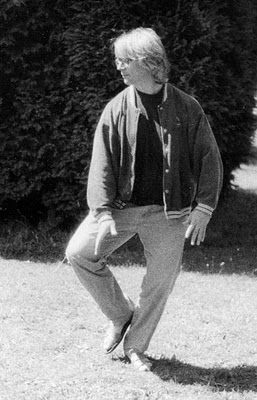
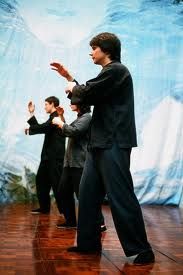
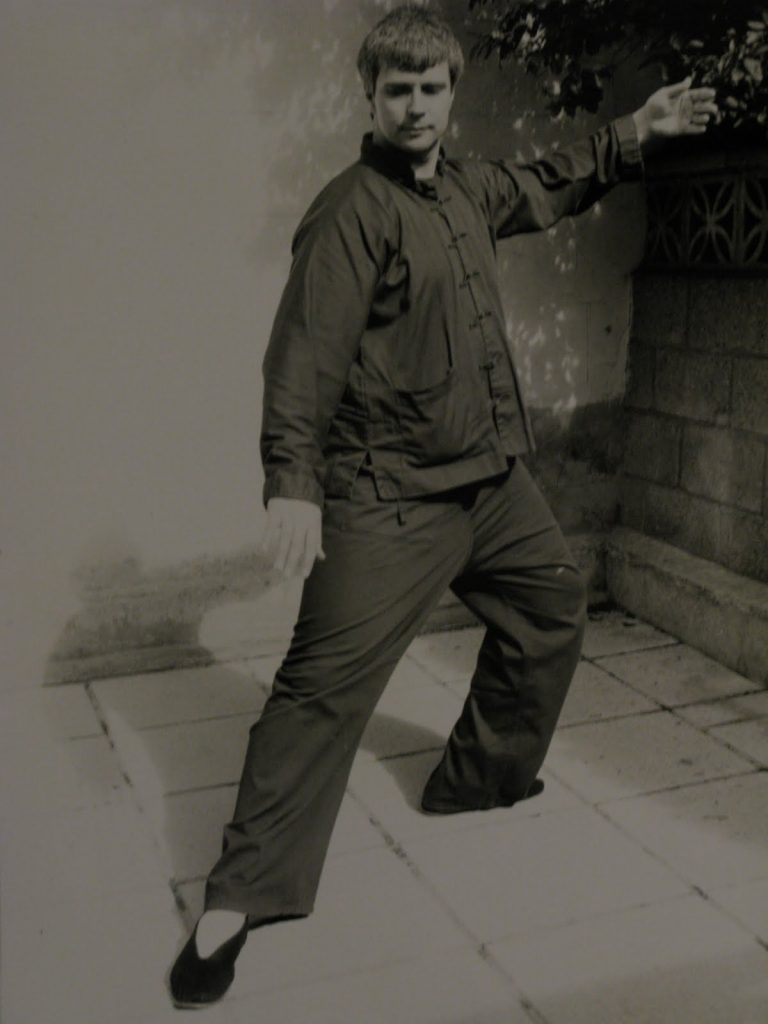
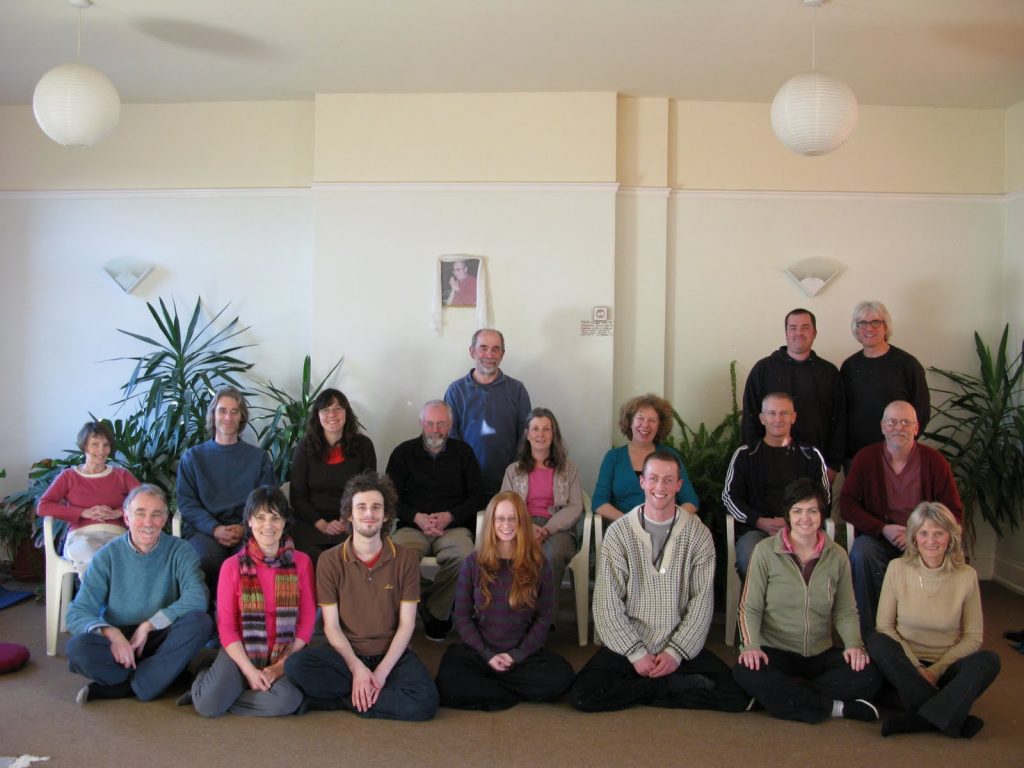
12/01/1948 – 03/03/2010
Founder of Natural Way Tai Chi
Student of:
Master John Kells
Grand Master Dr Chi Chiang-tao
Grand Master Dr Shen Hongxun




I’m finding health benefits from doing Tai Chi as the night draws in, 10pm ish. It’s Improving my sleep and it feels like I’ve had a body massage upon waking. The air is fresh and the stillness aids my practice-may I suggest you try it.
In Chinese medicine the concept of the Chinese Clock is that which splits the 24 hour clock into 12 2 hour segments where qi circulates at its strongest through certain meridians in the body. From the 15th Century onwards, or there abouts onwards, practitioners of internal arts who were generally both local or barefoot doctors analysed the functions and energy of the organs and began to register qi circulation and where it was prominent and deficient and realised the same time everyday their results were the same. From then onwards in medicinal texts and as practised today in Traditional Chinese Medicine (TCM)treatments can be applied to certain times of the day to aid stronger results. These 2 hour segments also cater for emotional and mental health as well as the organ health and functionality too.
This diagram gives the basic idea of organs and their functionality in accordance to their allotted time’s in a 24 hour space.
It can be very informative to consider these times when doing your practice or even to view when best to perform certain daily activities to align with TCM principles of health. Traditionally in internal martial arts this knowledge would be used by fighting martial artists to ascertain what meridians would be at their weakest so to inform a fighter on how they should overcome an assailant or challenger in their pugilistic endeavours.
However today in TCM, Taiji/Qigong and even Taoist meditation this knowledge is often used to produce better results in development and health restorative issues more so.
When you practice Taiji or even consider your general activities of the day it can be useful to remind oneself of the time of day it is and how altering your practice can bring about more efficient results.
Having participated in numerous vigorous activities in recent times, such as football, mountain biking and Brazilian Jujitsu I can say with confidence that Tai Chi has been a fantastic method for injury prevention and recovery. I have sustained muscles injuries and several other niggles. I have been aware of when to use my body and when not too, in order to allow it to rest and I put a large percentage of this down to Tai Chi as it has made me more mindful of HOW my body is doing at that moment.
Having spent over 20 years pracitcing Dr Chi`s and Alan Peck brand of Tai Chi I feel that it has help reduce damage, encourage youthful mantainence and body management. The softness found in this system I have not encountered in ANYTHING else ever yet (other Tai Chi, yoga or general physical exercise). In short DR Chi/AlanTai Chi helps you keep your body (in order to enjoy and participate in things you enjoy).
Clearly one has to practice in order to get benefits….But in order to eat healthy one has to eat more than one healthy meal a week!, so practice and try Tai Chi as a method for recovery and injury prevention if like me you like vigorous activites.
As a reminder classes start back on Monday 11th September @ 6:30pm.
With the most of Summer had we enter into a phase where Yang energy is still high but no long at it’s zenith and is starting to conclude it’s elevated state to join into Autumn after where it declines and levels out with Yin qualities with a balancing effect.
Whilst we still have Yang our practice can continue with large open postures and expansive intention with each joining movement in the form. Connecting to our environment far and wide with our practice can be beneficial to the mind as well as the body, greatly, at this time in the year. So even though the term starts back let’s all still try to practice outdoors whilst we can and connect far and wide into our environments to exercise Shen (Spirit) in our forms.
Enjoy the sun (in between the windy and wet bits of weather) and i’ll see you on Monday to start the term back.
Phil.
Many people ask about Tai Chi and whether it is effective as a martial art. The answer is yes however that is not a simple and straight forward yes. Finding someone who has trained well to demonstrate the applications and execute them effectively approaches a fuller yes. This is just the same thing as a weapon. If a weapon is not handled with skill it might be ineffective in what it can achieve, and therefore it may not harm anyone, but in the hands of someone with knowledge and experience it then has deadly application. However, demonstration of applications and technique can be very useful not just to verify fighting ability but also more real time co-ordination.
Here a couple of clips of some useful and interesting application of Tai Chi postures and Tai Chi principles.
Here is an interesting clip of Master Sam Tam who was a peer of Master Alan Peck and who both studied under Grand Master Chi Chiang-tao at the same time.
Interesting and old footage of Grand Master Huang Sheng-shyan’s public and some would say controversial fight against a famed wrestler at the time circa late 1950’s early 1960’s.
An interesting clip from modern day martial artist both internal and externalist Chris Crudelli demonstrating Tai Chi fighting techniques.
From time to time I will try to post up some other bits of applications or even form work from past Masters as although the quality of film may be variable we can learn from this documentation the Tai Chi principles being used in either combat demonstration of form work.
In the Tai Chi classics there is great mention of the hips or waist and the importance it plays in our Tai Chi practice. Yang Cheng-fu draws two of his 10 Golden rules of Tai Chi together to highlight this when he speaks of Loosening the Waist and uniting both upper and lower parts of the body. These 2 particular points have a special relationship in helping the body work as one unit.
This is not just for form practice but actually for all Tai Chi whether it’s open hand forms (Short and Long), Weapons forms and Push Hands too. Why are the hips and waist so important?
The hips/waist are at the bottom of the spine and therefore are the foundation for everything that happens in the upper body. However the hips/waist also sit on top of the legs and also act as the gateway to allow our root from the feet that then channels all movement up the legs to pass onto the spine. It’s like a lock-gate that you would see on a canal system on the river ways in that it controls what passes through it. Again the classics speak very clearly on how we transmit the force for all Tai Chi movement in our body when it says Qi is rooted in the feet; channelled through the legs; directed by the waist onto the spine and then is expressed in the hands and fingers by way of the arms.
A common feeling in practitioners who cannot feel the whole body as one unit is that the legs move and the upper half of the body including the arms move separately. This is because the waist is closed and does allow the unification of upper and lower.
If we forcibly turn our waists with strength then we usually close it and we still keep the upper and lower separated. However if we sink our waist and hips, and like Tai Chi teachings make it feel like a ball on water i.e. frictionless, then we open it and can allow all the work we do with our feet connected to the ground to transmit naturally up through to the spine.
Push Hands is an excellent opportunity to learn how to loosen the waist and make it feel like a ball on water. In Push Hands we need to unite the sensitivity of the upper half of the body with the work done by the lower half of the body for yielding and attack to be successful. Yes, you’ve guessed it, the key to this is the loosening of the waist. In this way the hips/waist have 2 functions:
When the lower lumbar of the spine is closed the backside protrudes a little and this is a physiological sign that the Tailbone/Coccyx known as the Wei-Lu in Tai Chi and Chinese Medicine has not sunk downwards to help lower alignment of the spine. Some Tai Chi schools of thought say we must tuck the Wei-lu down and in, which is not entirely correct. If we do this physically and with force tension can still be held and the waist actually can still remain closed. So we sink our mind intention or Yi down through the whole pelvis, and the effect can be felt very subtly at first of the Wei-lu dropping and an opening or greater connection from the legs up onto the spine. This opens up and connects upper and lower as Yang Cheng-fu instructs us. When we walk around in our normal lives it is a significantly valuable practice to sink the mind down through the pelvic region and let go of the waist all the time to open up the hips/waist. This allows us to develop it as a good habit, and when we practice any form solo or with a partner we must try to do the same.
The other benefit of doing this, in and outside of our Tai Chi practice, is that it keeps the mind quite low in the body and thus naturally allows us to sink the Qi and reduce upper body tension, which is good for Tai Chi in general as well as our health. So in summary, the hips/waist help us to advance in our practice in all areas in Tai Chi and also help provide a better quality of health too. So make it your habit to loosen the waist, unite the upper and lower body into one and for Qi and internal force to take over tension and dissolve it so nothing obstructs your internal practice and experience.
We all learn postures new and revised throughout our studies and without consistent practice we can forget them too. Master Alan Peck the head of our lineage in the Middle Way School always said repeatedly “Make your Tai chi your life and your life your Tai chi”. What he meant by that was don’t keep them separate. When we finish every class we do there’s a tendency to go back to the mindset of “I need to get something to eat when I get home” , “I need to pop into the hops on the way back or “What will work be like tomorrow” etc. However to find the form in our life so it’s effects are realistic we need to never stop doing Tai Chi even when we are not doing the form.
However more than that when actually doing the form practice we must also move out of the way of trying to do it so hard. What I ultimately mean by this is we need to investigate relaxation to a level we may not yet of experienced so deeply in life before. Relaxation is the ultimate key to advancing in Tai Chi. It is an almost never ending quest, and an exciting one too. It continuously opens many doors of realisation and revels many steps up can be taken by trusting in the mode of being as relaxed as possible. Alan would always also say to “relax about the idea of relaxing”. When I finally understood that what that meant for me personally I took it as a primary goal in all my endeavours in improving my form.
We all know the shapes of the postures and the movements in the form, but there comes a point when we have to let go of them and allow something else to control them, and not just our muscles. We need to let the mind to both inform and allow the circulation of qi in the body to create the shapes and movements themselves. This is the meaning of allowing your life and Tai Chi to become the same thing. The application of our mind and intent is what takes us to another level in our Tai Chi because as the classics say the body are the soldiers and the mind is the general. The general gives orders and the soldiers carry them out. In our early stages in Tai Chi it feels like the soldiers (muscles) are in complete control of our form however are development comes to a point when we realise more and more that the general is the primary force that wins the battle and makes the form manifest. The body will always e needed to makes the postures and applications but the mind becomes more and more authoritative and directing in how it comes about.
The method for this to develop is through relaxation and allowing the mind to show itself more when we do our form and have some faith that it will grow stronger to command the body and it’s movements more so.
When we first do our Tai Chi it can be quite external where we impress the movements on our body by the command of the muscles mostly. However Tai Chi advancement will come the more you recognise that we don’t make the form happen by forcing tension on our muscles externally, but allowing the Qi to fill up the limbs, feet, hands and torso according to the shapes and movements internally, under the direct orders of the mind.
Li = External muscular force – usually segmented and unconnected.
Qi = Internal whole body force – smooth flowing singular movement throughout the whole body.
Yi – Mind intent – ever present and always everywhere in the body when your attention manifests.
These 3 elements must always be recognised in your practice as they are vital to correct practice. The ingredient which binds them all together and makes them more amplified is relaxation. When all 3 aspects become your habit then your Tai Chi will be resent in everything you do in life and you will have achieved making your life and Tai Chi the same thing.
As Master Tung Tsai-liang a class mate of Dr Chi Chiang-tao’s used to tell his students “small loss equals small gain, big loss equals big gain”. To relax means to really let go of the current limit of your experience and skills and allow knowledge and wisdom to show itself in your practice. If you hold onto to tension then the door will remain firmly closed and you will leave success in your Tai Chi outside in the cold.
So despite the current weather at this time of year have faith and take a chance when you hear wisdom knocking at the door of your body in Tai Chi and let it in. Let it in by relaxing like you’ve never relaxed before. The rewards are incalculable!
Q, What is different about this system?
A, An interest in softness & yielding and where is can be used?
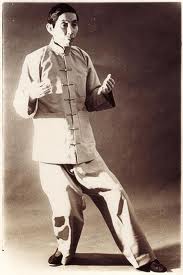
Whilst practising and studying the concept of Fajin (the explosive discharge of force which results from correct technique) in Tai Chi it’s important to remember…..everything!
The classic’s in Tai Chi are subtle, and the many translations do hold the internal secrets in the words written down on paper. The big secret is continued practice of Tai Chi as higher levels eventually reveal themselves to yourself after frequent and continued practice. A teacher will guide you to it but ultimately only you can pull back the curtain to reveal the secrets after being placed in front of the curtain first.
Fajin, or the sudden discharge of whole-bodied internal force, is achieved by starting the movement of force in the feet. From here the very tangible flow of movement, directed by intention, passes up the legs through unlocked joints and relaxed muscles to the base of the spine. From here the whole back opens or even feels like it inflates gathering the force initiated from the feet. Only from here can we direct the force through open and relaxed shoulder joints and through the lowered and open elbow joints out through to the slightly stretched forearms to discharge through the wrists and hands.
This method of practice may seem like it’s easy to remember as list of how to get the internal force from the feet out through the hands, but we must make sure all the basic foundational practices we have been taught over the years are in place to allow it to happen. It seems easy and the issuing of force logically does feel simple when it starts to appear in one’s practice, however the key IS to continue your practice, always.
When we make breakthroughs in our Tai Chi sometimes we don’t see exactly when it arrives, we just realise that our experience has somehow changed or altered and our awareness takes note of this. When it considers what it is that is different in our practice, we seem to have an expanded internal awareness on the mechanics of what’s going on in our body. Here is where real Tai Chi learning and development takes place. This is where we pull the curtain back and start to validate in our own experiences key phrases that we have read over the years in the classics which may of seemed merely poetic at times. Here we can realize what past Masters were really talking about, and we can start to gain some solid understanding of how Tai Chi works on an internal level.
The mind is spoken of a lot in Tai Chi, yet it’s a specific use of the mind that brings us success. We refer to the type of mind we use in all our Tai Chi as Yi or intent. Intent is different from imagination which is unfocussed or untethered. Yet both, one could say, are equally allowing thought alone to manifest in our minds. Imagination can run riot and have no real boundaries and thus the dream like ideas we have in our imagination can seem unachievable. Whereas intent is focussed but still relaxed, controlled yet free flowing and has a location. Our mind’s connect and focus on the yung Chuan / “Bubbling Well” acupuncture point (Kidney 1) in the centre of the sole of the foot just behind the ball of it. If all our foundational and continued practice has been done, then quite easily the mind attaching to this point can cause a circuit of subtle movement to open up and start moving up the legs. As it moves (through the locations mentioned above) it gains power along the way until discharging through the hands ( or in fact any part of the body one chooses to issue from). It is also the intent which decides if the force will discharge powerfully, as in Fajin, or softly as in clearing energetic blockages from the channels in the body as in Qigong.
When you get accustomed the feeling of internal force or Jin in Tai Chi when you practice your form, so many things you have read over the years or heard through instruction from a teacher starts to drop neatly and concisely into place. You will be able to appreciate more profound writings of the Masters in the classics more so. You will also be able to develop yourself, by yourself, out of curiosity and motivation to your own personal needs.
To finish with here’s a quote, or really one of the definitions from the Collins Dictionary under the sub heading of Physics as to what force is:
“operating influence that produces or tends to produce a change in physical quantity”
With all the teachings of Tai Chi, and everything it enables us to do and be aware of, this dictionary quote sums up very nicely the transportation and transformation of force in and around the body in Tai Chi. The operating influence is the mind intent; the production of change is the movement in force through the body and the physical quantity is the body as a measured whole and the end product of the force once moved and discharged.
There are higher levels in Tai Chi above moving internal force and the influence of the mind upon it, however this is a key intermediary level which if learned correctly, will help guarantee further mastery.